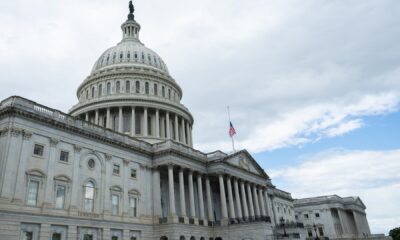About 94% of borrowers worry about ever repaying their student loans. (iStock)
Student loan debt has been an ongoing discussion among Americans for years as the debt balance continues to grow. The country’s total student loan debt now sits at $1.6 trillion, according to Federal Reserve Bank of New York data.
These debts are overwhelming for many borrowers. Nearly 94% of respondents to a Credit and Debt survey expressed significant worry about their ability to repay their student loans. An additional 65% said their monthly payments are already unaffordable.
It’s not for lack of trying either. Many borrowers want to pay off their debt, the survey found. About 92% of survey respondents said paying off their student loans is a top priority.
Borrowers are seeking more effective solutions to their debt — 67% of respondents want better ways to deal with their debt, such as refinancing or consolidation options.
If you’re considering refinancing, make sure to compare student loan refinancing rates before you apply, so you can make sure you find the best deal for you. Credible can help you find rates that work better for your budget.
REPUBLICAN STATES FILE SUIT TO STOP BIDEN’S SAVE STUDENT LOAN REPAYMENT PLAN
President Biden just announced $7.4 billion in student loan debt relief
The Biden Administration announced more student debt relief recently. They approved $7.4 billion in relief for 277,000 borrowers.
The forgiveness was broken down into three different types. $3.6 billion went towards 206,800 borrowers enrolled in the SAVE Plan. Borrowers who have been paying for 10 years and originally borrowed $12,000 or less are likely to receive some relief.
An additional $3.5 billion was set aside for 65,800 borrowers who saw adjustments to their income-driven repayment plans. About 4,600 other borrowers received $300 million due to fixes to Public Service Loan Forgiveness programs.
“Today’s announcement shows — once again — that the Biden-Harris Administration is not letting up its efforts to give hardworking Americans some breathing room,” U.S. Secretary of Education Miguel Cardona said.
“As long as there are people with overwhelming student loan debt competing with basic needs such as food and healthcare, we will remain relentless in our pursuit to bring relief to millions across the country.”
The Biden Administration’s announcement brings the total loan forgiveness it has provided to $153 billion for about 4.3 million Americans.
If you have private student loans, unfortunately, federal relief doesn’t apply to you. If you’re looking to lower monthly payments and ease the burden of student loan debt, consider refinancing your student loans. Lock in some of the lowest interest rates ever via the online marketplace Credible.
PRESIDENT BIDEN ANNOUNCES NEW STUDENT LOAN FORGIVENESS PLANS THAT COULD BENEFIT 23 MILLION AMERICANS
Many voters want to see student debt relief happen
Election season is here, and voters are eager to see student loan forgiveness discussed by the two candidates.
A Protect Borrowers Action poll, conducted by SocialSphere took a look at voters’ attitudes toward student loan debt. Nearly half of the respondents said canceling debt is an important issue for them.
Voters of color were even more likely to want debt cancelation discussed in this upcoming election – 66% of respondents of color said this was one of their top issues.
One survey participant explained, “It’s [student debt] like a giant anchor pulling you into the depths of the sea.”
Another one explained the burden they face, saying, “I owe more than what I initially borrowed. It feels very overwhelming.”
A large majority of survey respondents think something should be done to alleviate student debt — 70% of respondents want the government to act. Borrowers who have already paid off their loans largely agree, with 67% responding that the government should help reduce student debt balances.
To get out from under your student loan debt, refinancing can potentially help you secure a lower interest rate. To see if refinancing is right for you, view this rates table from Credible to compare rates from multiple lenders at once.
RETIRED AMERICANS WITH STUDENT LOAN DEBT RISK GARNISHMENT OF SOCIAL SECURITY BENEFITS
Have a finance-related question, but don’t know who to ask? Email The Credible Money Expert at [email protected] and your question might be answered by Credible in our Money Expert column.

 Blog Post1 week ago
Blog Post1 week ago
 Personal Finance1 week ago
Personal Finance1 week ago
 Personal Finance1 week ago
Personal Finance1 week ago
 Personal Finance1 week ago
Personal Finance1 week ago
 Finance1 week ago
Finance1 week ago
 Economics1 week ago
Economics1 week ago
 Economics1 week ago
Economics1 week ago
 Economics4 days ago
Economics4 days ago










